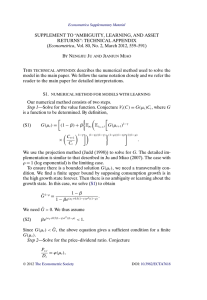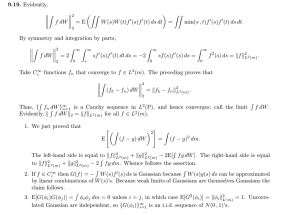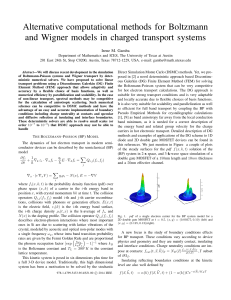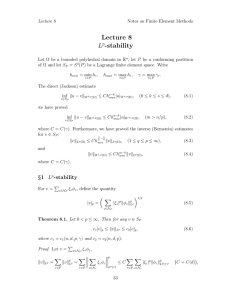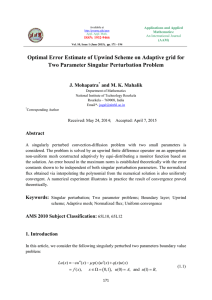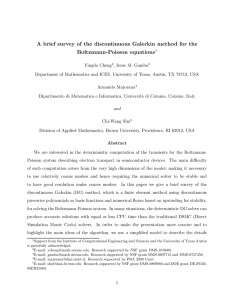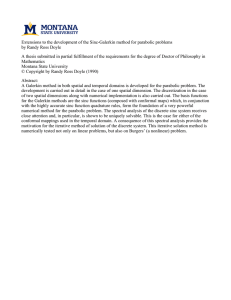MATH 5620 NUMERICAL ANALYSIS II
advertisement
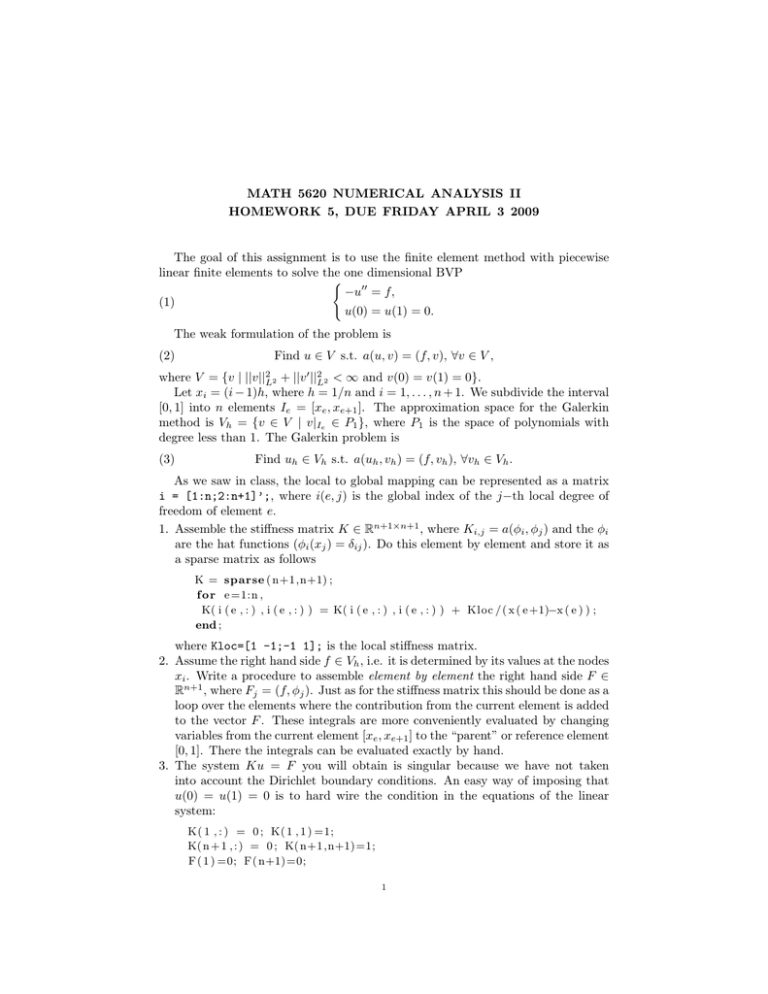
MATH 5620 NUMERICAL ANALYSIS II
HOMEWORK 5, DUE FRIDAY APRIL 3 2009
The goal of this assignment is to use the finite element method with piecewise
linear finite elements to solve the one dimensional BVP
(
−u00 = f,
(1)
u(0) = u(1) = 0.
The weak formulation of the problem is
(2)
Find u ∈ V s.t. a(u, v) = (f, v), ∀v ∈ V ,
where V = {v | ||v||2L2 + ||v 0 ||2L2 < ∞ and v(0) = v(1) = 0}.
Let xi = (i − 1)h, where h = 1/n and i = 1, . . . , n + 1. We subdivide the interval
[0, 1] into n elements Ie = [xe , xe+1 ]. The approximation space for the Galerkin
method is Vh = {v ∈ V | v|Ie ∈ P1 }, where P1 is the space of polynomials with
degree less than 1. The Galerkin problem is
(3)
Find uh ∈ Vh s.t. a(uh , vh ) = (f, vh ), ∀vh ∈ Vh .
As we saw in class, the local to global mapping can be represented as a matrix
i = [1:n;2:n+1]’;, where i(e, j) is the global index of the j−th local degree of
freedom of element e.
1. Assemble the stiffness matrix K ∈ Rn+1×n+1 , where Ki,j = a(φi , φj ) and the φi
are the hat functions (φi (xj ) = δij ). Do this element by element and store it as
a sparse matrix as follows
K = sparse ( n+1,n+1) ;
f o r e =1:n ,
K( i ( e , : ) , i ( e , : ) ) = K( i ( e , : ) , i ( e , : ) ) + Kloc / ( x ( e +1)−x ( e ) ) ;
end ;
where Kloc=[1 -1;-1 1]; is the local stiffness matrix.
2. Assume the right hand side f ∈ Vh , i.e. it is determined by its values at the nodes
xi . Write a procedure to assemble element by element the right hand side F ∈
Rn+1 , where Fj = (f, φj ). Just as for the stiffness matrix this should be done as a
loop over the elements where the contribution from the current element is added
to the vector F . These integrals are more conveniently evaluated by changing
variables from the current element [xe , xe+1 ] to the “parent” or reference element
[0, 1]. There the integrals can be evaluated exactly by hand.
3. The system Ku = F you will obtain is singular because we have not taken
into account the Dirichlet boundary conditions. An easy way of imposing that
u(0) = u(1) = 0 is to hard wire the condition in the equations of the linear
system:
K( 1 , : ) = 0 ; K( 1 , 1 ) =1;
K( n + 1 , : ) = 0 ; K( n+1 ,n+1)=1;
F ( 1 ) =0; F( n+1)=0;
1
2
MATH 5620 NUMERICAL ANALYSIS II HOMEWORK 5, DUE FRIDAY APRIL 3 2009
4. Solve the problem (1) with n = 10 and n = 100 and f (x) = exp(x) (taking as
right hand side for the system Fj = exp(xj )). Plot the numerical solution along
with the true solution utrue (x) = − exp(x) + (exp(1) − 1)x + 1.
5. Do a log-log plot of h and the maximum error between the numerical solution
uh and the true solution utrue , for n = 10, 100, 500, 1000. How does the error
behave as a function of h?





